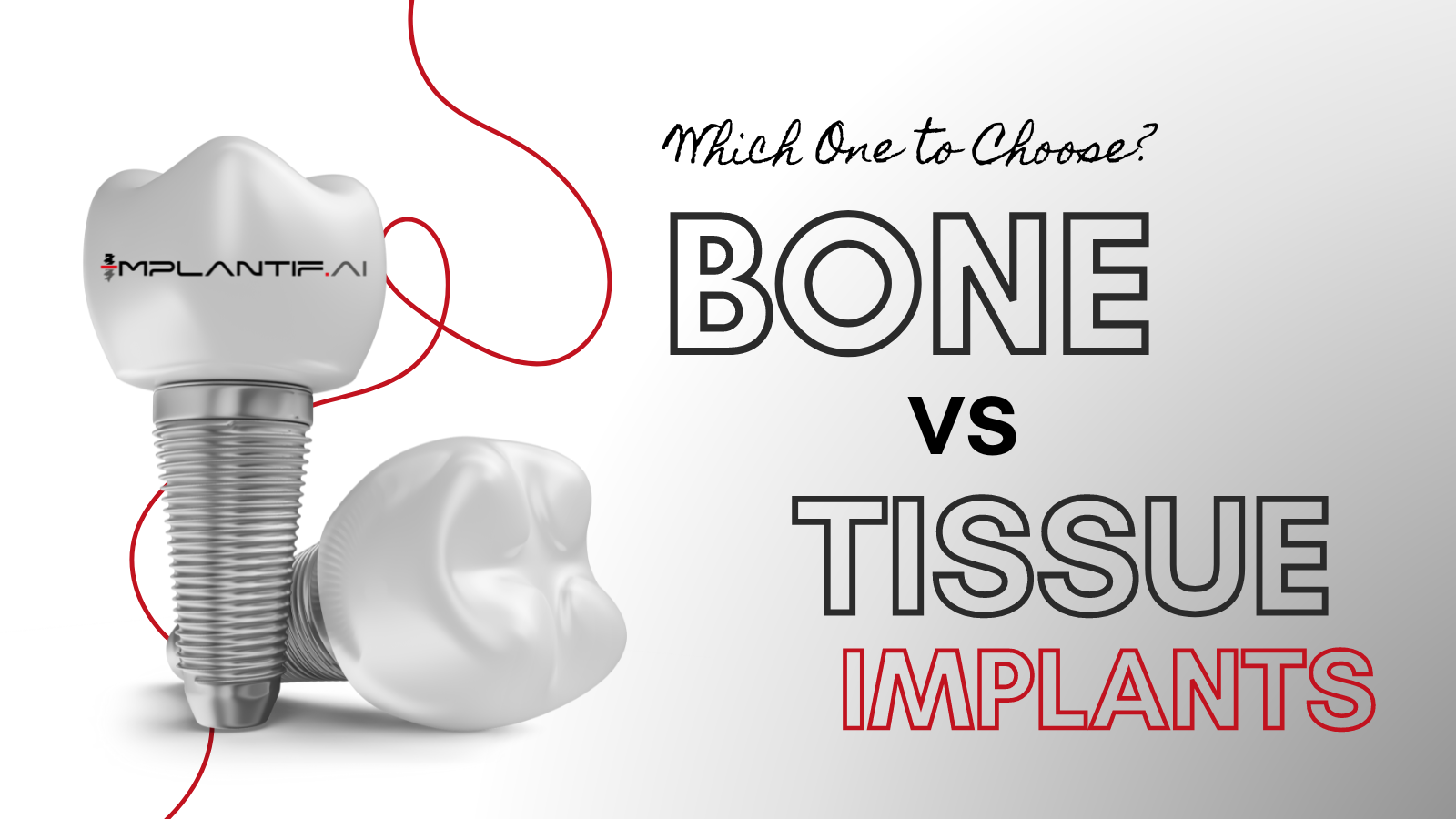Bone Level or Tissue Level Implants: That’s the question!
This is the eternal debate in dentistry: which one to choose? From the Implantif.AI team, we will give you a series of guidelines from our point of view to help you choose between one type of implant or another depending on the clinical situation and the strengths and weaknesses of one implant versus the other.
Is one type of implant better than another? The answer is simple: No!
They are implants with different characteristics designed for one clinical situation or another. A single implant in the esthetic zone is not the same as a single implant in the posterior area, nor is a full-arch FP1 rehabilitation or with artificial gingiva, and even less so if the implant is placed in a patient with a previous history of periodontitis.
As you can see, the decision of which implant to select and place in each patient does not depend on taste but on the clinical situation and characteristics of the patient.
BONE LEVEL IMPLANTS (BL)
As their name indicates, they are implants placed at the level of bone. Depending on the prosthetic rehabilitation philosophy, this type of implant can be set at juxta-osseous or 1-2 mm subosseous level. This gives for another post, but we already informed you that from Implantif.AI, we bet for a Bone-level philosophy placing the implant subosseous as long as we can perform platform switching on this implant.
TISSUE LEVEL IMPLANTS (TL)
They are implants with a rough part (body threads) and a polished neck at the soft tissue level. They are exceptional implants but have a different philosophy than Bone Level implants. Contrasting the bone-level counterpart, tissue-level dental implants are strategically positioned slightly beneath the gum line, with a portion nestled under the soft tissue cover.To put it quickly, tissue-level implants incorporate a transepithelial abutment that you must place in bone-level implants and pay for such an abutment.
These are the macroscopic characteristics of both types of implants. Now we will see in more detail certain aspects that will help us decide.
What are the differences between Bone Level vs Tissue Level implants?
As it is placed at bone level, it is a less demanding implant from the surgical point of view. When it comes to prosthetic rehabilitation, there will be a wide range of prosthetic abutments that will allow correcting minor discrepancies, whether they are surgical due to angulation of the implant towards the vestibular or due to factors inherent to the patient’s soft tissues, in which a connective tissue graft would be necessary, and the patient does not want it. If we had placed a TL implant in this clinical situation, the metal collar would have been visible, which could have led to esthetic problems for the patient. However, in this clinical situation, we can choose an interface of lower gingival height with a BL implant, and the problem is solved. This is one of the significant advantages of versatility. However, we must know that each abutment has a cost and be willing to assume that cost. In addition, some BL implants allow us to work with the platform-switching philosophy, which aims to reduce marginal bone loss around implants.
At the other extreme, we find TL implants. This type of implant has an “integrated” transepithelial abutment, so purchasing an extra abutment to rehabilitate this implant is unnecessary. This, which can be an advantage, has some limitations. For example, it is a demanding implant, as its surgical placement will condition the prosthetic emergence of future rehabilitation. Not all TL implants are the same, and in future posts of this blog, we will explain the differences in the polished neck between different commercial TL implant manufacturers.
As you have seen, most of the differences are at the prosthetic level: how to rehabilitate these implants. Therefore, from the Implantif.AI team, we will give you some indications so that you can consider which situations we believe are convenient to use one implant or another.
1. Single implant in the esthetic area: Bone Level Implant.
2. Posterior unitary implant: Bone Level or Tissue Level Implant.
3. Full-Arch Rehabilitation FP1: Bone Level Implants
4. Full-Arch rehabilitation with artificial gingiva: Bone Level or Tissue Level implants.
As the field of dental implants advances, one area that has posed challenges is the identification of implants. Ensuring accurate tracking and information about your dental implants is crucial for ongoing care. Have you ever encountered difficulties in identifying your dental implants or keeping track of their details? Consider exploring innovative solutions like Implantif.AI, a cutting-edge platform designed for accurate, speedy, and efficient identification of dental implants. Embracing technology can streamline the process and enhance the precision of managing your dental implant information.
